Intel's gambit: New Core Ultra mobile CPUs take on Apple and AMD with AI chips, double the graphics power and ultra-efficient laptops. But will it work?
Intel's Meteor Lake CPUs will redefine standards for AI-powered laptops in 2024.
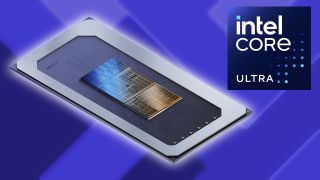
What you need to know
- Intel unveils Meteor Lake mobile CPUs with new Performance, Efficient, and Low-Power Efficient cores, powering Evo and vPro devices for premium and business users as the newly-named Core Ultra range.
- H-Series and U-Series specs breakdowns reveal core and thread counts, cache sizes, power draws, and an improvement to internal graphics with all-new Intel Arc iGPUs.
- Intel's Core Ultra processors promise thinner, longer-lasting laptops with better performance, integrated AI capabilities, and quieter, cooler systems, potentially marking the start of an AI-focused era in PCs.
Intel has revealed specifications for its upcoming next-gen Meteor Lake CPUs with H-series and U-series mobile chips among the new Core Ultra range featuring a new Efficient (E-cores) and Performance (P-cores) design. Built with a new 'Intel 4' process with Foveros 3D packaging, the two specialized cores join Intel Arc iGPUs on the H-series, graduating from Intel Iris Xe with AI-powered XeSS rendering enhancements as the U-series focus on ultra-efficient, low-power devices.
The game-changing Core Ultra processors will power all-new Intel Evo and vPro devices for a "no-compromise premium mobile experience" and "shape the future of commercial computing" for commercial and business users, respectively, as Intel claims. Here's everything you need to know about the new chips and the Ultra platform.
Intel Core Ultra specifications
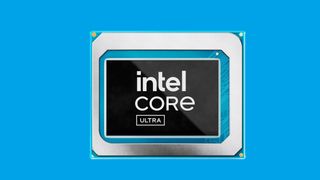
Intel has finally shared official specs breakdowns for eight of its latest processors, split across the new H-series and U-series. It follows a move away from Intel's older naming schema, significantly changing the iconic 'Core i' branding in favor of this generational reset. For now, we can dig into the details for a handful of Core Ultra 5 and Core Ultra 7 mobile processors.
| H Series | Core Ultra 9 185H* | Core Ultra 7 165H | Core Ultra 7 155H | Core Ultra 5 135H | Core Ultra 5 125H |
|---|---|---|---|---|---|
| Cores | 16 (6+8+2) | 16 (6+8+2) | 16 (6+8+2) | 14 (4+8+2) | 14 (4+8+2) |
| Threads | 22 | 22 | 22 | 18 | 18 |
| Intel Smart Cache (LLC) | 24 MB | 24 MB | 24 MB | 18 MB | 18 MB |
| P-core max turbo | Up to 5.1 GHz | Up to 5.0 GHz | Up to 4.8 GHz | Up to 4.6 GHz | Up to 4.5 GHz |
| E-core max turbo | Up to 3.8 GHz | Up to 3.8 GHz | Up to 3.8 GHz | Up to 3.6 GHz | Up to 3.6 GHz |
| Graphics | Intel Arc GPU | Intel Arc GPU | Intel Arc GPU | Intel Arc GPU | Intel Arc GPU |
| GPU frequency | Up to 2.35 GHz | Up to 2.3 GHz | Up to 2.25 GHz | Up to 2.2 GHz | Up to 2.2 GHz |
| Xe-cores | 8 | 8 | 8 | 7 | 7 |
| NPU | Intel AI Boost | Intel AI Boost | Intel AI Boost | Intel AI Boost | Intel AI Boost |
| Compute engines | 2x Gen3 | 2x Gen3 | 2x Gen3 | 2x Gen3 | 2x Gen3 |
| PCIe lanes | TBC | 1 (x8)Gen 5 + 3 (x4)Gen 4 + 8 (x1, x2, x4)Gen4 configurable | 1 (x8)Gen 5 + 3 (x4)Gen 4 + 8 (x1, x2, x4)Gen4 configurable | 1 (x8)Gen 5 + 3 (x4)Gen 4 + 8 (x1, x2, x4)Gen4 configurable | 1 (x8)Gen 5 + 3 (x4)Gen 4 + 8 (x1, x2, x4)Gen4 configurable |
| RAM speed | Up to DDR5-5600 | LPDDR5/x-7467 | Up to DDR5-5600 | LPDDR5/x-7467 | Up to DDR5-5600 | LPDDR5/x-7467 | Up to DDR5-5600 | LPDDR5/x-7467 | Up to DDR5-5600 | LPDDR5/x-7467 |
| RAM capacity | Up to 64GB (LP5) | 96GB (DDR5) | Up to 64GB (LP5) | 96GB (DDR5) | Up to 64GB (LP5) | 96GB (DDR5) | Up to 64GB (LP5) | 96GB (DDR5) | Up to 64GB (LP5) | 96GB (DDR5) |
| Max Turbo power | 64, 115W | 64, 115W | 64, 115W | 64, 115W | 64, 115W |
| Base power | 45W | 28W | 28W | 28W | 28W |
Core counts are split into three parts for the new generation: Performance, Efficient, and Low-power Efficient (P+E+LPE.) Combining the 6+8+2 count of a new Intel Core Ultra 165H brings it to 16 cores with 22 threads and 24 MB of shared 'Intel Smart Cache' (LLC, also known as L3 cache.) The same core and thread count is shared with the Intel Core Ultra 7 155H alongside its cache and only starts to drop with the Core Ultra 5 pairing.
It's the same story with the Core Ultra 5 135H and Core Ultra 5 125H. The core/thread count and cache are the same, saving its differences for clock frequencies of the underlying P- and E-cores. The NPU (neural processor) technology is the same across the board, with all four H-Series chips featuring Intel AI Boost and the same dual Genx3 neural compute engines. Maximum RAM capacity and speeds are also the same, supporting up to 96GB of traditional DDR5-5600 or 64GB or LPDDR5.

Starting with a base of 64W puts the new H-Series chips above the 13th Gen Intel Core Mobile H- (45W) and HX-Series (55W) for power draw as the remaining specifications fall somewhere between the two. Still, the previous generations don't account for efficiency advancements introduced with the new low-power E-cores. A 115W max Turbo power matches similar CPUs in the 13th Gen Mobile H-Series. These comparisons help us understand where these newly formatted model numbers would stand in a traditional Intel SKU breakdown.
* The Intel Core Ultra 9 185H is expected in Q1 2024, so some specifications are to be confirmed.
Get the Windows Central Newsletter
All the latest news, reviews, and guides for Windows and Xbox diehards.
| U Series | Core Ultra 7 165U | Intel Core 7 164U* | Core Ultra 7 155U | Core Ultra 5 135U | Core Ultra 5 134U* | Core Ultra 5 125U |
|---|---|---|---|---|---|---|
| Cores | 12 (2+8+2) | 12 (2+8+2) | 12 (2+8+2) | 12 (2+8+2) | 12 (2+8+2) | 12 (2+8+2) |
| Threads | 14 | 14 | 14 | 14 | 14 | 14 |
| Intel Smart Cache (LLC) | 12 MB | 12 MB | 12 MB | 12 MB | 12 MB | 12 MB |
| P-core max turbo | Up to 4.9 GHz | Up to 4.8 GHz | Up to 4.8 GHz | Up to 4.4 GHz | Up to 4.4 GHz | Up to 4.3 GHz |
| E-core max turbo | Up to 3.8 GHz | Up to 3.8 GHz | Up to 3.8 GHz | Up to 3.6 GHz | Up to 3.6 GHz | Up to 3.6 GHz |
| Graphics | Intel Graphics | Intel Graphics | Intel Graphics | Intel Graphics | Intel Graphics | Intel Graphics |
| GPU frequency | Up to 2.0 GHz | Up to 1.8 GHz | Up to 1.95 GHz | Up to 1.9 GHz | Up to 1.75 GHz | Up to 1.85 GHz |
| Xe-cores | 4 | 4 | 4 | 4 | 4 | 4 |
| NPU | Intel AI Boost | Intel AI Boost | Intel AI Boost | Intel AI Boost | Intel AI Boost | Intel AI Boost |
| Compute engines | 2x Gen3 | 2x Gen3 | 2x Gen3 | 2x Gen3 | 2x Gen3 | 2x Gen3 |
| PCIe lanes | 3 (x4)Gen 4 + 8 (x1, x2, x4)Gen4 configurable | TBC | 3 (x4)Gen 4 + 8 (x1, x2, x4)Gen4 configurable | 3 (x4)Gen 4 + 8 (x1, x2, x4)Gen4 configurable | TBC | 3 (x4)Gen 4 + 8 (x1, x2, x4)Gen4 configurable |
| RAM speed | Up to DDR5-5600 | LPDDR5/x-7467 | LPDDR5/x-6400 | Up to DDR5-5600 | LPDDR5/x-7467 | Up to DDR5-5600 | LPDDR5/x-7467 | LPDDR5/x-6400 | Up to DDR5-5600 | LPDDR5/x-7467 |
| RAM capacity | Up to 64GB (LP5) | 96GB (DDR5) | Up to 64GB (LP5) | Up to 64GB (LP5) | 96GB (DDR5) | Up to 64GB (LP5) | 96GB (DDR5) | Up to 64GB (LP5) | Up to 64GB (LP5) | 96GB (DDR5) |
| Max Turbo power | 57W | 30W | 57W | 57W | 30W | 57W |
| Base power | 15W | 9W | 15W | 15W | 9W | 15W |
The new Intel Core Ultra H-Series chips carry much more familiar model numbers, almost perfectly reflecting those from the Intel 13th Gen Mobile U-Series range. However, the similarities end with the names as the specifications receive an (expected) bump in all categories. Of particular interest is that the Core Ultra 7 and Core Ultra 5 processors detailed for the new U-Series all share the exact 2+8+2 (P+E+LPE) core count and 14 threads with 12 MB of Intel Smart Cache, rather than splitting the two apart as the H-Series does.
They differ in frequency (GHz) and pass on the latest Intel Arc graphics in favor of standard Intel Graphics. Still, they will support AV1 video encoding/decoding alongside modern display technologies. Predictably, the Intel Arc iGPUs are saved for portable devices with a consistently higher power draw, like gaming laptops, as the new U-Series keeps the 15W base power shared by its 13th Gen predecessors. On the other hand, the max turbo power receives a minor bump from 55W to 57W.

Neural processing potential shares a parity with the new H-Series chips with Intel AI boost and the same compute engines alongside the same maximum memory speed and capacity count. It's a more straightforward comparison to Intel's previous generation of mobile processors, and it seems like the new U-Series is taking charge with the shorter numbering format and passing it onto the H-Series.
* The Intel Core Ultra 7 164U and Intel Core Ultra 5 134U are expected in Q1 2024, so some specifications will also be confirmed later.
What about pricing?

There were no clarifications on pricing for OEMs or how each CPU might affect a consumer device, so we can only speculate. Since an Intel 13th Gen Core i7-13700H carried a $502 MSRP and offered a 14c 20t core/thread setup with 24MB of Intel Smart Cache, which is slightly below the highest spec Intel Core Ultra 7 165H, a similar price range seems realistic enough for that.
For the U-Series, a 13th Gen Core i5-1335U with a $340 MSRP featured a 10c 12t split with 12MB of cache, a generational step-down from the new Intel Core Ultra 7 165U. Somewhere between $299 and $549 could cover the eight processors revealed today, though bumping the internal graphics chips to Intel Arc technology may have increased production costs.
Intel Arc in H-series chips with XeSS
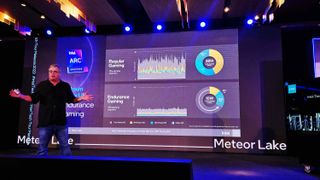
Devices featuring the new Intel Core Ultra H-Series mobile processors paired with at least 16GB of dual-channel RAM can be loaded with an all-new internal graphics engine powered by the same technology behind Intel Arc desktop GPUs. Its in-house upscaling technology, XeSS, works alongside the new Xe Media and Display Engines to push for increased performance at native 1080p rendering resolutions.
Essentially, this means that onboard graphics on Intel laptops will no longer rely on the lacking Iris Xe technology for gaming and instead lean on the modern driver support provided by Intel's efforts into first-party desktop GPUs. Regular updates come with performance increases and improvements to stability, with most popular titles like Apex Legends, Counter-Strike 2, and PUBG: Battlegrounds internally tested and running well on ultrathin systems running at only 28W with the Intel Core Ultra 7 165H.
AI Boost with 3D performance hybrid architecture
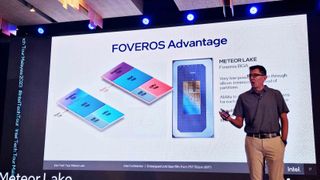
Intel's Core Ultra processors use a manufacturing process called 'Intel 4,' which uses disaggregation to separate individual 'tiles' on the processor's SoC (System on a Chip) as part of its '3D FOVEROS' architecture. Essentially, this amounts to smarter power usage and the usual push for increased efficiency on battery-powered devices like laptops by combining a CPU, GPU, and NPU into one chip.
Video playback that the GPU would previously handle is now controlled by the primary SoC Tile, enabling the GPU to power down when it isn't needed. The new Low-power E-cores offer a third performance tier for background functions in Windows 11 (and presumably more for Windows 12 when it arrives.) Plus, an embedded NPU offloads AI-specific tasks, freeing up cores without performance compromise.

Depending on the operating system and OEM enablement, everything can be controlled by the Intel Thread Director, which handles the priority of workloads for each core to ensure each performs the tasks best optimized for their design, which first appeared with 12th Gen Intel Core processors. This, paired with Intel AI Boost found on all the revealed H-Series and U-Series processors, handles the NPU-specific side for low-power tasks to offload workloads from the CPU and GPU.
Intel vPro and Evo in the Meteor Lake generation

Along with Intel’s Core Ultra ‘Meteor Lake’ mobile processors, the company is updating its Intel Evo platform for laptops (and increasingly, accessories). Intel Evo is a set of standards and metrics that Intel has set to ensure the best experience using its processors, focusing on efficiency, speed, battery life, specifications, and whether the laptop in question is using all the technology that Intel’s chip supports.
For 2024 and its new Core Ultra processors, Intel focuses on a few new key areas, including testing for “cooler, quitter performance,” Ecolabel compliance minimum requirement of EPEAT Silver Certification or TCO certification, Wi-Fi 6E, and more, including these core features:
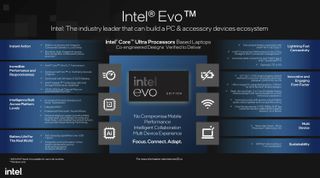
- Consistent responsiveness on battery across 15 common tasks.
- Cooler, quieter performance and responsiveness with new testing.
- Instant-on and authentication ≤1.5 seconds to get you into the flow quickly.
- Ten or more hours of real-world battery life on laptops with full HD display4.
- Four or more hours of battery life in a 30-minute charge on laptops with full HD display.
- Intel Wi-Fi 6E (Gig+) with 160 MHz channel support and 6 GHz spectrum for low latency and reliable connections6.
- Intel Connectivity Performance Suite with advanced connection manager for smart Wi-Fi connection and optimization version.
- High-quality cameras meeting VCX Camera Metric >32.
- Added efficiency on audio/video features with the neural processing unit (NPU).
- Camera status lights for end user privacy and security.
- Enhanced video effects, including Microsoft Studio Effects
Other essential features required of the Intel Evo label include Thunderbolt 4 (Type-C), Intel Unison software for phone and tablet syncing, thin bezels, Precision touchpads, at least 8GB of RAM/256GB PCIe SSD, biometric login, integrated NPU, enabled with Microsoft Studio Effects, etc.
Not all laptops, however, are Intel Evo-certified. Laptop makers must submit their mobile PCs for testing and certification, which likely tacks on extra costs. That means you’ll only get Intel Evo certifications on more premium laptops. Indeed, Intel has a badge (sticker) on the laptop keyboard deck, designating the laptop’s compliance with its internal standards.
Does that mean you should opt for an Intel Evo laptop next time you buy one? Absolutely. Intel Evo laptops are usually co-engineered with Intel, making the closest approximation to what Apple does in controlling laptop design for the entire stack (even Microsoft works with Intel on Evo to support many of its features). The only exceptions are gaming laptops, where most of the above goes out the window, or laptops that fall below $1,000.
What this means for Windows users
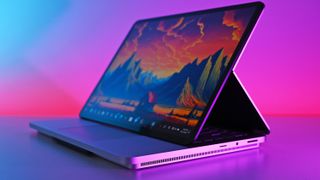
The big takeaway from forthcoming laptops featuring Intel Core Ultra processors can be summarized around a few crucial areas:
- Better battery life: A big focus for Core Ultra is on power efficiency, so we should see even thinner laptops or laptops of similar size as today but with bigger batteries that are longer lasting.
- Performance: As usual, there should be a nice uptick in performance.
- NPUs and AI: The big push for 2024 is having an NPU of which Intel’s Core series will play a big role. NPUs will open the door for all new software and operating systems to leverage their power for localized AI abilities instead of being cloud-based.
- Cooler and quieter systems: Intel and its OEM PC partners are working more closely than ever on co-engineered designs, and a big focus on quiet fans and cooler chassis should result in more satisfied customers.
Of course, like all new processors, we’ll have to test Intel’s brand-new chips in various laptops. Luckily, we’re hearing at the Consumer Electronics Show (CES) in early January that we’ll see even more Core Ultra laptops. That should give us more benchmarks across various new and older laptop designs to see if Intel can compete against Apple’s best and Qualcomm’s.
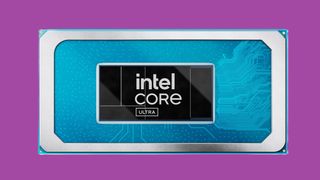
The biggest potential, however, is having an NPU in every new productivity laptop. With rumors around Microsoft’s next-gen AI-driven operating system and PC makers teaming up with software companies to deliver AI software to these laptops, we could see AI move beyond online chatbots and image generators to more localized and task-driven use cases in familiar and novel ways.
Buckle up, if the industry is to be believed, 2024 is the year of the AI PC, and it all starts with Intel.

Daniel Rubino is the Editor-in-chief of Windows Central. He is also the head reviewer, podcast co-host, and analyst. He has been covering Microsoft since 2007, when this site was called WMExperts (and later Windows Phone Central). His interests include Windows, laptops, next-gen computing, and watches. He has been reviewing laptops since 2015 and is particularly fond of 2-in-1 convertibles, ARM processors, new form factors, and thin-and-light PCs. Before all this tech stuff, he worked on a Ph.D. in linguistics, watched people sleep (for medical purposes!), and ran the projectors at movie theaters because it was fun.
- Ben WilsonChannel Editor